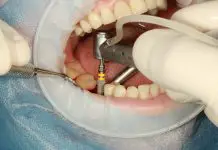Exercise may be a pivotal part of maintaining a healthy lifestyle, but it will take a toll on the body as it ages.
Even just moving through one’s 30s, joints will often become stiff, sore, and inflamed from exercises that could be done with no problem just a few years back.
When this discomfort does occur, there are some steps that can be taken to not only prevent pain, but to also improve joint health altogether.
Incorporate Range of Motion Movements
Range of motion stretches and exercises should be done at least once every other day, but preferably once a day. This process is simple as each major joint in the body is extended and stretched through the entire range of motion that is possible.
From gently rotating ankles to rolling ones neck and shoulders, this will improve strength, circulation, and elasticity of the tendons and muscles.
Focus on Good Form
No matter the exercise that is being carried out, proper form should be the primary concern. Far too many people tend to add extra weight or increase their speed and intensity without maintaining the right bio-mechanical platform.
Every few weeks, health enthusiasts should go through each of the movements that they do on a weekly basis and take a closer look to see if any corrections need to be made that could prevent joint injuries.
Support Your Feet
According to Dr. Ian Russell, a podiatrist from Calgary, feet are the base of your work out. Most of your power comes from your foot driving into the ground.
If your feet aren’t well supported, you’ll be feeling pain in your feet, shins, knees, and lower back. Get proper shoes for your feet for a less painful workout.
Exploring Low Impact Exercises
High impact and high volume training will slowly need to decline and replaced with low impact exercises.
While no one should ever feel as if they must completely do away with their favorite sport or hobby, cutting out a few days of heavy weights or intensive sports per week and replacing them with swimming, running on the sand, elliptical machines, or a bike ride will give the joints time to rest.
Supplements and Topical Treatment
After speaking with one’s doctor, non-steroidal anti-inflammatories can be used just before or just after a workout in smaller doses. If this does not seem to be helping the problem, topical ointments and balms can be used to reduce inflammation and soreness.
For chronic pain, supplements such as glucosamine, chondroitin sulfate, and Omega-3 fatty acids have been shown to improve joint health.
Pain and Inflammation Relief After
Along with thoroughly stretching all parts of the body, alternating hot and cold packs will help to reduce inflammation and swelling and improve circulation to the soft tissue. Hydrotherapy in a warm bath as well as massage will also help flush lactic acid from the area and relieve pain when done an hour or two after exercising.
Joint pain is a medical issue that countless individuals are forced to deal with every single day. For those that would like to maintain an exercise routine, these tips and tricks can be used to improve joint health and decrease pain.
Update 26-10-2016
Editor: dead link removed.







































![Yoga for Weight Loss [Infographics] yoga](https://healthiack.com/wp-content/uploads/2014/03/yoga-100x70.jpg)